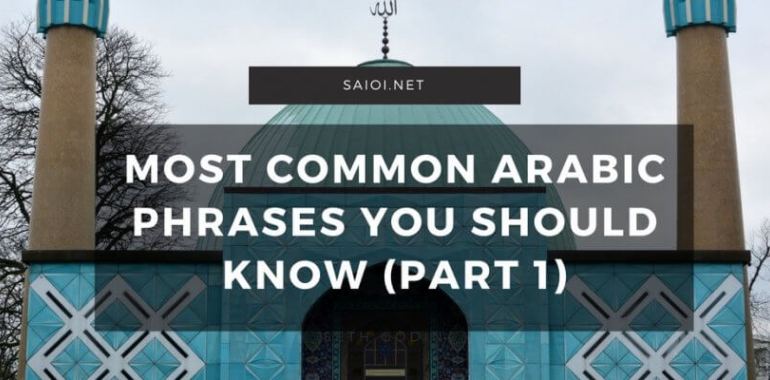Most Common Arabic Phrases You Should Know (Part 1)
If you are planning to learn Arabic, then before you get into the deep grammatical structures of the Arabic language or start learning the colloquial Arabic, you should start with the most common greetings and phrases. You can use these basic Arabic words and phrases to start any communication, and build your vocabulary from it. These basic greetings and instructions can make your life much easier if you are visiting an Arab country! In this lesson, we will discuss the basic greetings at the time of meeting!
Common Arabic Phrases Used When You Meet Someone
When meeting someone, it is common for members of the same sex to exchange handshake. In case of family members and friends, the handshake is followed by a kiss on each cheek. In most Arab regions, an exchange of handshake between the opposite gender is considered to be offensive.
1. “Ahlan” ( أهلاً ) and “Marahaba” ( مرحبا – equivalent to Hi/Hello) is the most common Arabic greeting, and is used when you meet someone.
2. “Ahlan wa Sahlan” (أهلاً و سهلاً) is used when you welcome someone to your home.
3. Many people prefer “Asslam-u-alaikum” ( السلام عليكم – Peace be upon You) to greet anyone and the response is “Wa Alekumasslam” ( و عليكم السلام – Upon you be peace).
4. “Sabah AlKhair” (صباح الخير – Good Morning) and “Masa AlKhair” (مساء الخير – Good Evening) is also used by people and the response is “Sabah An Noor” ( النور صباح – Light of Morning) and “Masa Un Noor” (النور مساء – Light of Evening) respectively.
5. Tasharaffna (تشرفنا – We have been Honoured) is used as a token of respect to honour a visitor. The royal “We” is used even when you want to say “I have been Honoured”
6. “Ma’as Salamah” (مع السلامة – Goodbye) is the standard way of parting ways, while “Ilal Liqa'” (إلى اللقاء – Until we meet again) is also used at the time of leaving.
Basic Arabic Phrases for Communication
How are you is the most common question that follows greetings in any language. Arabs also take this questions seriously, and in many customs, they don’t stop at that! The How are you is followed by questioning individually about the people you know!
7. “Kaif Halak” (كيف حالك – How are You?) is what most people will ask you after the courteous greeting. And as customs dictate, you don’t go on to tell all the problems you are facing, but respond with…
8. “Bikhair” (بخير – Fine) is the standard response to the question and many preferably add Alhamdu Lillah (الحمد لله – Thanks to the Lord) to it.
9. Another way to respond is to courteously ask them the same question – “Ana Bikhair, Shukran. Wa anta” (أنا بخير شكرا و أنت؟ – I am Fine, Thankyou. And You?).
Knowing Someone
When meeting Someone for the first time, it makes sense that you would like to know their names and they would want to know yours.
10. You can ask “Ma ismuk” (ما إسمك؟ – What is your name) and the response to the question is “Ismii [Your Name]”. So if you want to say “My Name is Mohammad”, you will say “Ismi Mohammad” (إسمي محمد – My Name is Mohammad)
These are some of the basic phrases that are part of everyday life. The greeting, introduction and farewell has been covered in this lesson. In the next lesson, we will discuss more words that are used in everyday life situation.
If you are interested in learning Arabic from SAIOI, then you can learn by registering here. You will get Free Trial of one hour on Skype from one of our highly qualified teachers!




